The document discusses processor logic design and register transfer logic. It describes registers, their functions, and how data is transferred between registers. There are four categories of microoperations - interregister transfer, arithmetic, logic, and shift. Interregister transfer moves data between registers without changing it. Arithmetic operations perform math on register data. Logic operations perform AND, OR, etc on register bit values. Shift operations serially move data within a register. The document also discusses conditional control statements that allow different microoperations to be selected based on register values.
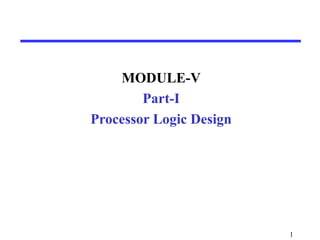
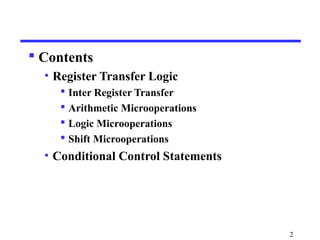









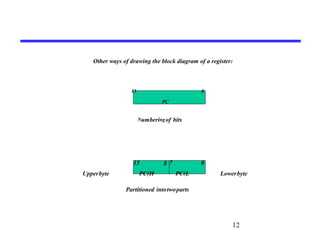

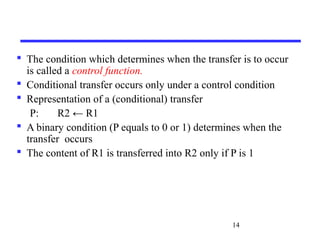


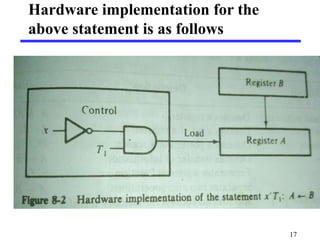






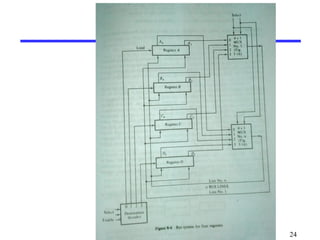
![Memory Transfer
Memory read : Transfer from memory
Memory write : Transfer to memory
Data being read or wrote is called a memory word (called
M)
It is necessary to specify the address of M when writing
/reading memory
This is done by enclosing the address in square brackets
following the letter M
Example: M[0016] : the memory contents at address
0x0016
25](https://image.slidesharecdn.com/module5-part1-170527041953/85/Module-5-part1-25-320.jpg)

![ Assume that the address of a memory unit is
stored in a register called the Address
Register AR
Lets represent a Data Register with DR,
then:
Read: DR ← M[AR]
Write: M[AR] ← DR
27](https://image.slidesharecdn.com/module5-part1-170527041953/85/Module-5-part1-27-320.jpg)


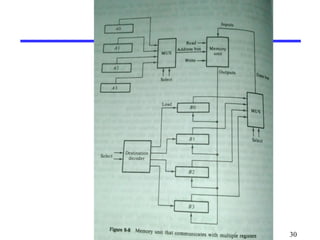








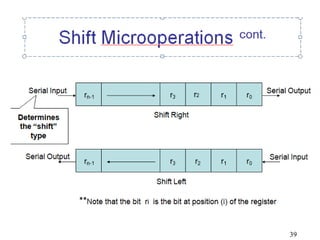






![CONDITIONAL CONTROL STATEMENTS
Conditional control statement is symbolized by an if-then –
else statement as follows:
P: If (condition) then [microoperation(s)] else
[microoperation(s)]
• It means that if the control condition stated within the
parentheses after the word if is true, then the
microoperation enclosed within the parentheses after
the word then is executed.
• If the condition is not true, the microoperation listed
after the word else is executed.
• In any case the control function P must occur for
anything to be done.
46](https://image.slidesharecdn.com/module5-part1-170527041953/85/Module-5-part1-46-320.jpg)
